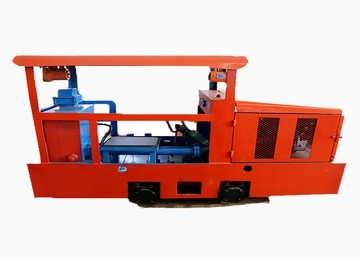Diesel Locomotive: A Comprehensive Product Encyclopedia
Date:2025-03-14 Label:
Electric Locomotive
Diesel Locomotive
Underground Mining Locomotive
Trolley Locomotive
Battery Locomotive
Narrow Gauge Locomotive
Explosion-proof Mining Locomotive
Overview
A
Diesel Locomotive utilizes a diesel engine to generate mechanical energy, which is then converted into motion to drive the train's wheels. Unlike steam locomotives, which rely on external combustion, or electric locomotives, which depend on overhead lines or third rails,
Diesel Locomotives are self-contained and do not require external power sources.

Key Components
Diesel Engine: The heart of the locomotive, providing the primary power source. Modern locomotives often use turbocharged engines for increased efficiency.
Transmission System: Converts the engine's mechanical energy into motion. Common systems include electric transmission (diesel-electric) and hydraulic transmission (diesel-hydraulic).
Traction Motors: Drive the wheels using electricity generated by the engine (in diesel-electric models).
Fuel Tank: Stores diesel fuel, providing the locomotive with a long operating range.
Cooling System: Prevents the engine from overheating during operation.
Control Systems: Include throttle, brakes, and other controls for safe and efficient operation.
Types of
Diesel Locomotives
Diesel-Electric Locomotives: The most common type, where the diesel engine drives an electric generator, which powers traction motors connected to the wheels.
Diesel-Hydraulic Locomotives: Use a hydraulic transmission system to transfer power from the engine to the wheels.
Diesel-Mechanical Locomotives: Employ a mechanical transmission system, though these are less common due to limitations in power delivery.
Diesel Locomotive Advantages
Versatility: Can operate on non-electrified tracks, making them ideal for remote or less-developed regions.
Efficiency: Diesel engines are more fuel-efficient than steam engines and produce fewer emissions.
Lower Maintenance: Requires less maintenance compared to steam locomotives.
Self-Sufficient: Does not rely on external power sources like electric locomotives.
Applications
Freight Transport: Widely used for hauling heavy freight over long distances.
Passenger Services: Commonly used for regional and intercity passenger trains.
Industrial Use: Employed in mining, construction, and other industrial settings for moving heavy loads.
Military: Used for logistical support and transport in military operations.